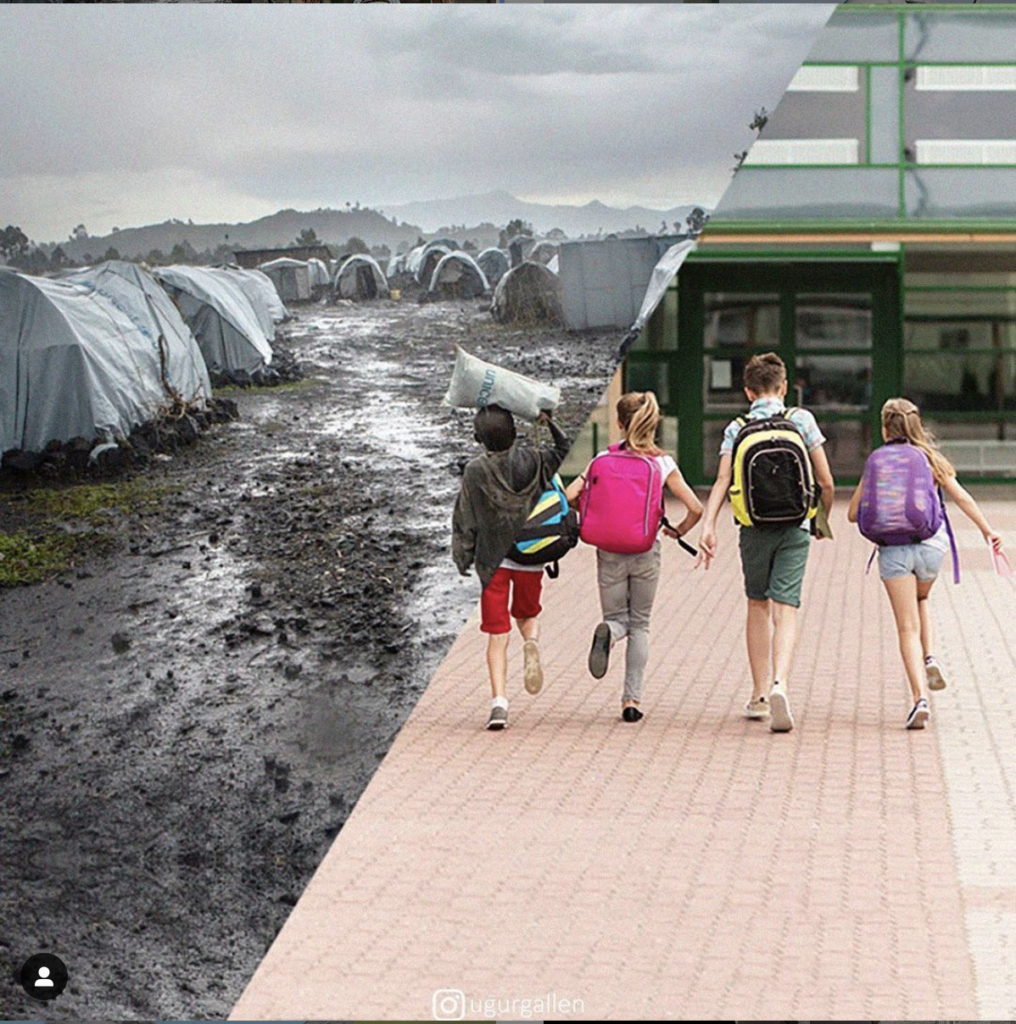For my master‘s thesis, I am concerned with the effect of images. The following questions should be clarified: How do I interpret an image? How in the qualitative and quantitative sense and why do which recipient groups use which (audio) visual offer? How do people perceive (audio) visual media and their images? How do you receive it and how do you process it? What do the (audio) visual media and their images do with people? What direct and indirect effects are (audio) visual media and their images associated with on various levels?
During my research, I came across a great artist who I want to present here today.
Uğur Gallenkuş combines photographs from different parts of the world and creates collages that make you think. With his collages, he draws attention to various injustices. Ugur Gallenkuş is a Turkish graphic designer who works in Istanbul. As a spontaneous reaction to the disturbing image of Aylan Kurdi – a three-year-old Syrian boy whose body was washed up on the shores of the Mediterranean – Uğur Gallenkuş has been developing an ongoing series of brutally honest work since 2015. Gallenkuş‘s series takes a steadfast look at the highly polarized world in which we live. The designer published his book in November 2020. Item Description: In honor of World Children‘s Day, artist Ugur Gallenkus is debuting his first book, Parallel Universes of Children. The book features selections from Gallenkus‘ ongoing series of collages juxtaposing the starkly different worlds today’s children inhabit globally.
Further information: https://ugurgallenkus.com
source:
Marion G. Müller, Stephanie Geise: Grundlagen der visuellen Kommunikation. München: UVK 2015



